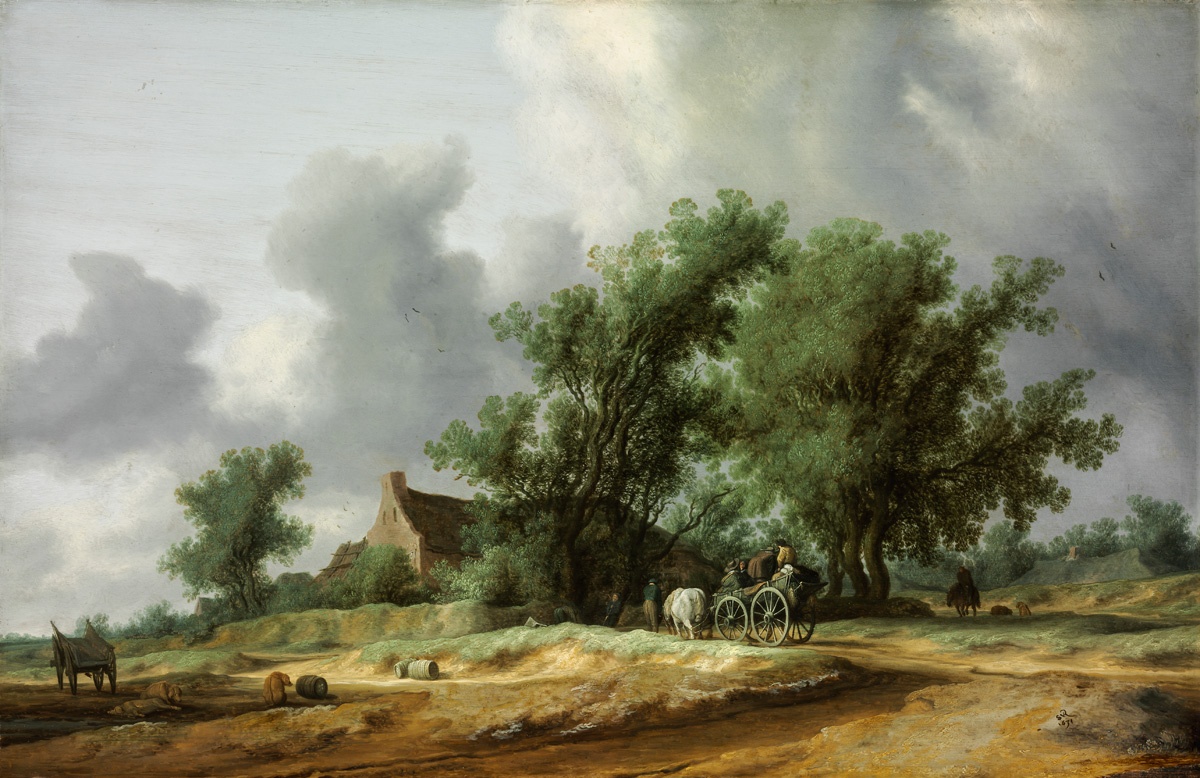When Hendrick Goltzius made a few drawings of the coastal dunes near Haarlem in 1603, perhaps even he did not suspect he was starting a revolution in European landscape painting. Instead of the Italianate golden-age idylls, to the Haarlem masters it was the here-and-now that mattered, and they painted everyday Dutch flatlands: dunes, canals, village streets, and the sea. These had hitherto been considered unworthy as subjects for a picture, but now seemed appropriate for conveying the new idea of the nation. And to make the new relationship clear, the viewpoint was brought down from on high to the ground. Now the sky dominated the picture, and the moist air cast a veil over the landscape. The Haarlem landscapists are admired chiefly for their masterful suggestion of this humid atmosphere. Each artist was able to create a different mood. Of the two greatest masters it is said that in Jan van Goyen’s works it always seems that rain is in the offing, while in Salomon van Ruysdael’s we sense a fresh breeze has just dispersed the shower. In After the Rain, known by this title since the nineteenth century, one can almost smell the refreshing scent as the ground breathes after the storm. The crisp, crystal-clear outlines suggest that for a moment the mist has risen. The cool tones of colour create a chill mood, though a strip of the dune is bathed in golden radiance by the sun breaking through the clouds. In the house at the edge of the village the tired travellers find solace at last.Axel Vécsey
en

